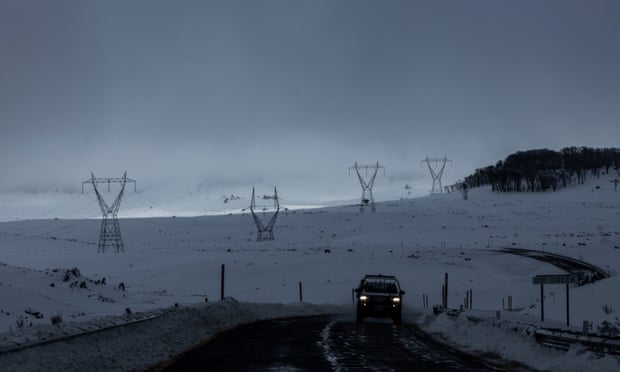Extract from The Guardian
Australian Energy Market Operator warns that without investment in new-generation electricity storage and transmission, demand will outstrip supply.

Wed 31 Aug 2022 03.30 AEST
Last modified on Wed 31 Aug 2022 03.31 AESTThe so-called “reliability gaps” would emerge in South Australia from the 2023-24 financial year and in Victoria in the following year, the Australian Energy Market Operator (Aemo) stated in its annual electricity statement of opportunities (Esoo).
Using a slightly more lenient reliability measure, NSW faced a possible gap in 2025-26, Victoria again in 2028-29, Queensland in 2029-30 and SA again in 2031-32.
As homes and businesses dumped gas in favour of electricity and took up electric vehicles, power demand would expand by about 15% over the next decade. That rise would come even as solar panels roughly doubled their contribution, meeting as much as half of household demand by 2031-2, up from 23% now, the report predicted.
Aemo’s CEO, Daniel Westerman, said the forecasts were intended to inform the different participants in the national electricity market (NEM) and reiterate “the urgent need” to ensure the capacity came online when it was required.
“In the next decade, Australia will experience our first cluster of coal-generation retirements, at least five power stations totalling 8.3 gigawatts, equal to approximately 14% of the NEM’s total capacity,” Westerman said.
“Without further investments, this will reduce generation supply and challenge the transmission network’s capability to meet reliability standards and power system security needs,” he said.
Fortunately, there was “a strong pipeline” of new wind and solar plants, storage to soak up their output, and transmission lines to deliver the power to where it’s needed. “If completed as scheduled, reliability risks for all regions are forecast to be within the relevant reliability standards until 2028-29 when further coal-fired power station retirements are expected,” Aemo said.
Extreme weather this summer was more likely to be flood-related rather than from bushfires.
The Bureau of Meteorology on Tuesday updated its climate drivers report to note four of the seven key models it used indicated a La Niña event will return for a third year in a row. Conditions in the Indian Ocean tilted towards a wetter-than-usual spring for much of Australia’s east.
One aspect of the report that may stir debate is the impact on potential reliability gaps from the 2040MW Snowy 2.0 pumped hydro scheme that is reported running years behind schedule with cost blowouts running in the billions of dollars. Last week, Paul Broad, Snowy Hydro’s CEO, quit abruptly with little official explanation for his exit.
“Despite media reports suggesting a delay to the project, Snowy Hydro has not confirmed any adjustment to its previously provided commissioning schedule of between 2025-26 and 2026-27 for the Snowy 2.0 project,” Aemo said.
Perhaps optimistically,
the report also lists Snowy Hydro’s 750MW gas-fired power Station at
Kurri Kurri in NSW as operating from December 2023.
The Esoo report noted the NEM has about 7.3 GW of committed generation capacity and 3.4GW of generation and storage projects.
These developments, though, fall “well short of the development opportunity of approximately 45GW of renewable energy and firming investments over the next decade identified in the 2022 Integrated System Plan to provide a reliable and resilient NEM” to make up for announced and potential additional generator closures.
The falling price of renewable energy as technology improved had made it increasingly difficult for ageing coal and some gas plants to compete. Renewable energy met 61.8% of demand in the NEM on 15 November 2021.
“Based on these trends, and considering the pipeline of committed and anticipated renewable developments and forecasts for consumers’ installation of distributed PV, instantaneous renewable energy potential is likely to meet or exceed 100% total generation requirements during certain intervals in 2024-25,” the Aemo said.
The report used an interim reliability measure that assumes all but 0.0006% of energy required in a region in any year is met. After 30 June 2025, the new reliability standard sets the limit of unserved electricity in each region of no more than 0.002% of the total.
No comments:
Post a Comment